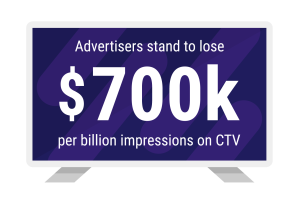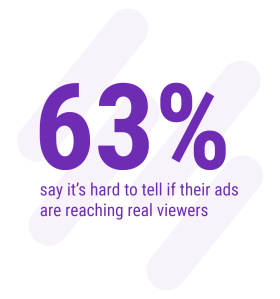Streaming is built on the promise of reaching audiences in high-quality, immersive environments. But what if your ad runs — and no one sees it?
In Connected TV (CTV), viewability is still a notable blind spot. As with other digital environments, just because an ad plays doesn’t mean it was actually viewed. And unique to the CTV environment, TVs can be turned off while streaming apps continue running in the background — sometimes for hours. And not all apps or devices properly detect or respond to the “TV Off” signal. That means ads keep rolling, even when screens are black.
This isn’t a fringe issue. It affects the entire ecosystem, from lesser-known apps to major publishers, across both smart TVs and connected devices.
DoubleVerify data shows that streaming advertisers stand to lose $700,000 per billion impressions if proper protections aren’t in place, including the “TV Off” issue. That’s a massive amount of wasted media spend.

Advertisers are noticing. In a DV global survey of nearly 2,000 marketers, nearly two-thirds (63%) said it’s hard to tell whether their ads are reaching real viewers. That uncertainty makes it difficult to optimize campaigns, measure performance or justify increasing investment.

So how do we fix it?
Traditional viewability solutions were designed for desktop and mobile — not for CTV. And while new standards like Open Measurement have become available, adoption remains limited. DV’s MRC-accredited solution addresses this gap by certifying environments as Fully On-Screen (FOS) and verifying whether the ad ran while the TV was actually on, along with measuring ad quartiles to meet industry standards.
In streaming, seeing is believing. And in a high-stakes, high-cost environment like CTV, viewability is more than a metric — it’s a must.
This topic, and more, is covered in our full report, DV Global Insights: Trends in the Modern Streaming Landscape.

